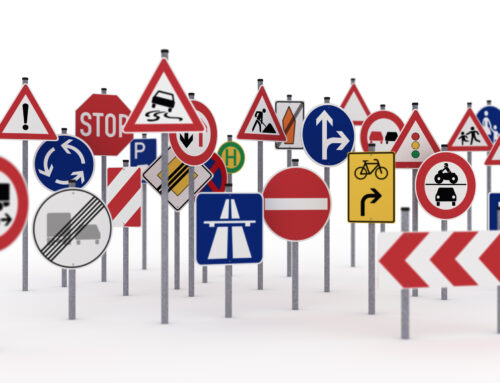A recent story indicated we here in Australia are becoming child un-friendly.
It indicated we are becoming more intolerant of children on planes, buses, restaurants, shopping centres. Really?
All of us were once a child, many of us have children, some still young and others grown. This story, or statement is interesting.
Why is this even being discussed? After all, children always have been and always will be everywhere. They are our future; they are a reflection of us.
I wonder if the problem is not with the child, but with the behaviour of some of the children? We often do not separate the child from the behaviour, but this is precisely what we need to do. Every child is uniquely special. They are not born angry, disrespectful, rude, scared or traumatised; they become this way from the life they lead and the modelling influence they receive from their parents and significant others in their life.
A child will act and behave the way they have learnt, watched, seen, heard and what is permitted. Where they may have grown up in a household of conflict, anger, hurt or disruption, they reflect these emotions and behaviours in their actions. If the child is raised in a loving, calm, respectful environment with clear boundaries, they reflect these behaviours in their actions.
Parents are extremely busy these days, often working hard to meet mortgage costs, school fees, plus living costs. They, unfortunately, do not seem to have the energy or time to set the clear boundaries for their child as it is sometimes easier to simply ignore the behaviours because they simply don’t want another argument. You can’t blame parents for that. Unfortunately, doing this only creates greater problems later as the child fails to learn the rules and boundaries they need to live in our society, their society.
Our children usually learn their style of behaviour and language from home. If there is aggression, conflict, disruption or anger, this is what they emulate, and their actions reflect this as well.
How then can a parent ensure their child behaves appropriately when in public or when travelling to avoid the condescending stares of others. The number of parents embarrassed by their children’s behaviour is escalating, and the feeling of judgement continues to hurt parents.
The behaviours must be modelled, and boundaries set within the home environment which then reflects outside the home. It is so confusing for a child if boundaries are unclear or the line is shifted. It is detrimental to the learning of the child is you scream at them to stop yelling, smack them for being aggressive to a sibling, dismiss them from speaking to you if they approach with an issue or problem.
Many parents do instil boundaries in their children but not the best way a for a child to learn, hence why so many parents say those regular words “they never listen to me”. This is usually because we as parents have never been taught correct communication language styles, which makes it more difficult to get your message across to our kids.
How many times do we tell our child before we go out with them “don’t misbehave”, “be good today when we are out” don’t run off” even “tidy up your room it’s a pigstye”, and these directions continue. This is not actually telling a child what you want, need or expect from them. Not in child language. Their brain is developing, it isn’t mature or logical yet. You may understand what you mean, but you are not speaking child language hence why the message may become lost.
Using child language we translate directions to:
- I expect you to remain with me today, stay close, please
- This is a public place and remaining quiet is really important
- Can you show me today how good and clever you are by listening?
- You are such an amazing kid; I love you are so smart and listen to me so well
- Let’s show everyone how clever and polite you are by staying close, sharing and speaking nicely
- Can you please pick up your toys and place them into the toy box, pop your shoes into the wardrobe and place dirty clothes into the laundry basket sweetie (you can even give the younger child a challenge to do it before you count to 20)
Child language needs to be clearly spoken and in the positive. Continually telling the child what we do not want them to do fails to direct them on what and how to do something right. We always respond better looking forward and moving toward what we want instead of looking back at what we need to avoid.
We all love kids. They are innocent, sponges, happy, active, sweet and usually very funny. While many European and Asian countries embrace children being everywhere, we in Australia can find them slightly annoying if they enter our domain. I wonder if this is because children there understand clearly their expectation and parents demand this of the child in so far as instructions are clear, modelling is directional and practice enable the child to learn expected behaviours. Don’t we hate noisy kids in an expensive restaurant, on a plane, in the theatre or in shopping centre stores?
We so often fail to eat out at nice restaurants with our kids, take them to the theatre and so on. We just take them to child-friendly places where they can run, play, yell and make a mess. While this is great, we also need t step to the side and allow the child to understand different behaviours for different surroundings and to learn different skills. Children are smart, they are also resilient and can adjust their behaviours for their different surroundings if the directions and modelling are clear. They don’t all yell and jump around within their classroom walls do they? They learn to sit quietly, listen and do their clearly defined required tasks and lessons.
As a suggestion, why not have some practice sessions at home of being in different surroundings you may want to take them to. Pretend you are going to a nice restaurant. Set your table with a table cloth, tv and devices off, lights dim, music on and a meal served. Demonstrate to your child your expectation and practice this, learning this is important. Before you travel on a bus or plane (trains they can often move around more) for a long journey, allow your child to understand what is going to occur and the time needed to reach the journey end. Tell them what will greet them at the end such as Nan will see us or there is a great big pool to swim in. Let them know the time it will take in age appropriate language. A long time isn’t clear but 10 hours for an older child is and the same time you are at kindy or preschool the whole day, that is how long it will take before we see Nana or can jump in the pool.
Always have some quiet age appropriate games and activities for the child to keep them amused without having them sit on a device with eyes down for hours. Engage with your child when out. Explain their surroundings, what people are doing, the reason they are doing what they do and ask them what they may like to do if they were working there or what else they could do in that job. Kids answers are very insightful and often accurate and very funny. This helps to engage the child in their surroundings instead of being somewhere telling them to settle down and be quiet.
How then can we teach our child to act and behave accordingly in public
- Model the behaviour we want them to emulate – set an example
- Use appropriate language that is positive, not negative
- Take time to listen to them and reflect back what you heard them tell you
- Advise them before going out what your expectation is for their behaviour
- Engage them in the surrounding they are in and discuss what is going on around them
- Inform them, age appropriately, of the amount of time they will be there or travelling for
Enjoy doing this with your children, enjoy the smiles you will receive from others and enjoy the experiences your child will absorb. This is all learning for them, make it fun and positive.
Read more from Dr Karen






